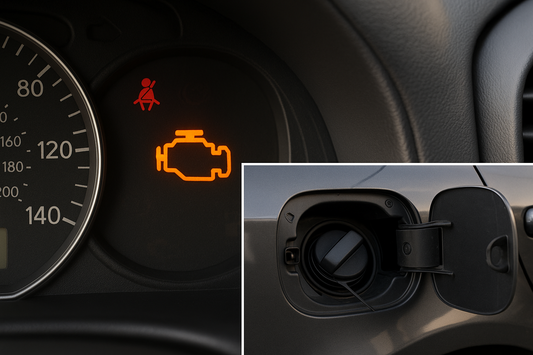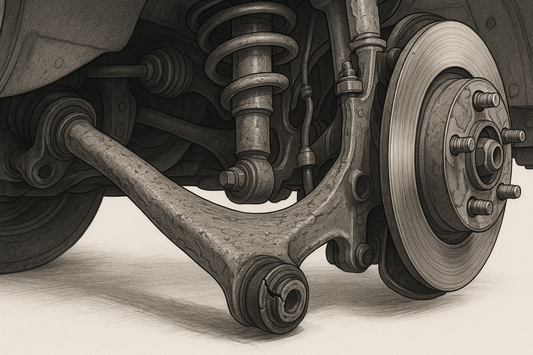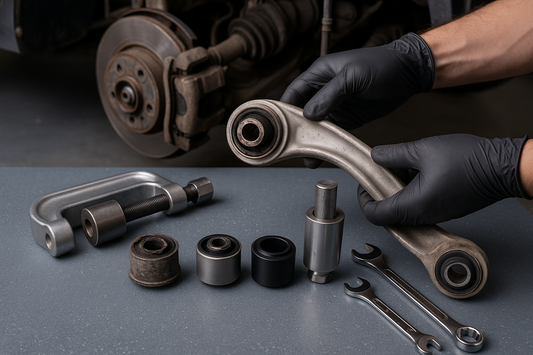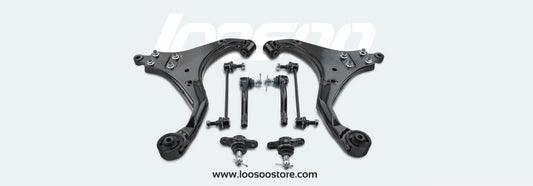Engine mounts are the unsung heroes of your car’s drivetrain—small but critical components that keep your engine secure, reduce vibrations, and protect nearby parts like the transmission and exhaust. When they wear out, the consequences can range from annoying rattles to costly damage.
In this guide, we’ll break down the top symptoms of bad engine mounts, why they fail, and how choosing a reliable brand like Loosoo can save you from headaches (and repair bills).
What Do Engine Mounts Do?
Before diving into symptoms, let’s clarify their role. Engine mounts are typically made of rubber (or synthetic elastomers) bonded to metal brackets. They:
- Secure the engine: Preventing it from shifting under acceleration, braking, or cornering.
- Absorb vibrations: Reducing engine shake from combustion and crankshaft movement.
- Protect adjacent parts: Minimizing stress on the transmission, exhaust, and wiring harnesses.
Without healthy mounts, your engine becomes a moving, vibrating mass—putting strain on other components and making your ride feel like a rollercoaster.

7 Key Symptoms of Bad Engine Mounts
How do you know when your engine mounts are failing? Look for these telltale signs:
1. Excessive Engine Vibration at Idle
One of the first red flags: a noticeable shake when the car is stationary. Worn rubber can’t dampen engine pulses, so vibrations travel through the chassis. You might feel it in the steering wheel, floor, or even the seats.
Example: A 2018 Honda Civic owner reported “my car feels like it’s about to shake apart when I’m stopped at a red light”—turns out, the front engine mount had cracked.
2. Clunking or Banging Noises When Accelerating/Braking
As mounts wear, the engine shifts forward under acceleration or backward when braking. This movement can cause metal-to-metal contact between the engine and frame, creating a “clunk” or “thud” sound.
Pro Tip: If the noise happens when shifting gears (e.g., Park to Drive), worn transmission mounts (a close cousin to engine mounts) might also be to blame.
3. Visible Engine Movement When Revving
Pop the hood, start the car, and rev the engine slightly (safely, with the car in Park). A healthy engine should stay nearly still. If you see it rocking or shifting more than an inch, your mounts are likely shot.
4. Transmission or Exhaust Misalignment
Engine movement can pull the transmission out of position, causing hard shifting or gear slippage. Similarly, exhaust components may rub against the frame, leading to rattles or even leaks.
5. Uneven Wear on Tires or Suspension Parts
Excess engine movement transfers stress to the suspension. Over time, this can cause uneven tire wear, worn control arms, or even strut damage—especially in front-wheel-drive cars where the engine sits transversely.
6. Check Engine Light (CEL) for No Apparent Reason
Severe engine movement can jostle wiring harnesses or sensors (e.g., the crankshaft position sensor), triggering false error codes. If your CEL is on but diagnostics show no mechanical issues, check the mounts.
7. Cracked, Torn, or Leaking Rubber (Visual Inspection)
Worn mounts often show physical damage: cracks in the rubber, separation from the metal bracket, or fluid leaks (some mounts are hydraulic and leak oil when damaged).
Why Do Engine Mounts Fail?
Common culprits include:
- Age: Rubber deteriorates over time (5–10 years, depending on driving conditions).
- Heat exposure: Engines generate heat, which accelerates rubber breakdown.
- Aggressive driving: Hard acceleration/braking stresses mounts.
- Poor quality replacements: Cheap mounts with low-grade rubber wear faster.

How to Check Your Engine Mounts (DIY Guide)
- Visual inspection: Look for cracks, tears, or fluid leaks on the rubber.
- Shake test: With the car off, use a pry bar to gently rock the engine—excessive movement means worn mounts.
- Test drive: Note vibrations at idle, noises when shifting, or clunks under load.
Caution: Always wear gloves and eye protection—engine bays have sharp edges and hot components.
Why Choose Loosoo Engine Mounts?
When it’s time to replace your mounts, quality matters. Loosoo engine mounts stand out for:
- Premium materials: High-grade synthetic rubber (resistant to heat and oil) bonded to reinforced steel brackets.
- OEM fit: Designed to match factory specs, ensuring proper alignment and vibration dampening.
- Durability: Tested to last 20% longer than generic brands in real-world conditions.
- Affordability: Priced 15–20% lower than dealer parts without compromising performance.
Loosoo also offers hydraulic mounts for high-performance vehicles, which use fluid-filled chambers to absorb even harsh vibrations—ideal for turbocharged engines or heavy-duty trucks.
Beyond Replacement: Protecting Your Engine Mounts
- Avoid aggressive driving: Hard acceleration/braking shortens mount life.
- Regular checks: Inspect mounts during oil changes (ask your mechanic to look for wear).
- Fix leaks promptly: Oil or coolant dripping onto mounts can degrade rubber.
Related Parts to Watch
Engine mounts don’t work alone—these components also affect drivetrain stability:
- Transmission mounts: Prevent transmission movement (symptoms include gear-shifting issues).
- Subframe bushings: Found in cars with separate subframes; worn bushings amplify vibrations.
- Motorsport-style mounts: For performance cars, these are stiffer but transmit more vibration (a trade-off for precision).
Final Take: Don’t Ignore Engine Mount Symptoms
A bad engine mount isn’t just an annoyance—it’s a ticking time bomb for your car’s drivetrain. By recognizing the signs early and replacing them with reliable brands like Loosoo, you’ll keep your ride smooth, quiet, and protected from costly collateral damage.










